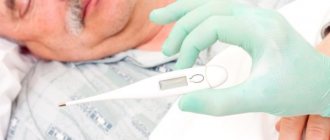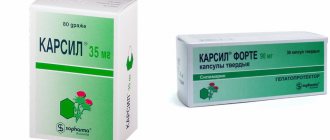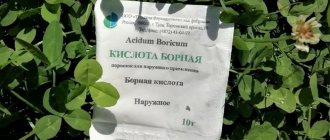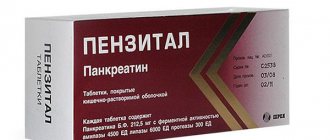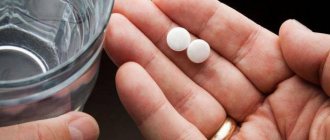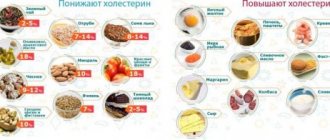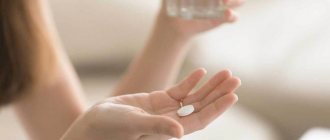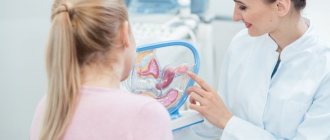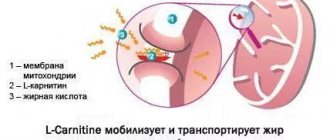Pharmacological properties
Pharmacodynamics.
Silymarin is a herbal active component of the drug Carsil Forte, obtained from the fruit extract of the milk thistle plant (silybum marianum). The drug has hepatoprotective and antitoxic effects. Karsil Forte inhibits the penetration of toxins into liver cells (shown in the venoms of the toadstool), and also causes physicochemical stabilization of the cell membrane of hepatocytes.
The antioxidant effect of the drug Carsil Forte is due to the interaction of silibinin with free radicals in the liver and their conversion into less toxic compounds. Thus, the LPO process is interrupted and further destruction of cellular structures does not occur; toxins are neutralized physiologically.
Karsil Forte stimulates the biosynthesis of structural and functional proteins and phospholipids (due to specific stimulation of RNA polymerase A) and accelerates the regeneration of liver cells.
The clinical effect of the drug Karsil Forte is manifested in improving the general condition of patients with liver diseases, reducing subjective complaints (such as weakness, a feeling of heaviness in the right hypochondrium, loss of appetite, itching, vomiting). Laboratory parameters improve: the activity of transaminases, gamma-glutamyltransferase, alkaline phosphatase and the level of bilirubin in the blood plasma decreases. Long-term use of the drug Carsil Forte significantly increases the survival rate of patients with liver cirrhosis.
Pharmacokinetics. Suction. After oral administration, silymarin is slowly and incompletely absorbed from the digestive tract. Subjected to enterohepatic circulation. Does not accumulate in the body.
Excretion. T½ of silymarin is 6.3 hours. It is excreted mainly with bile in the form of glucuronides and sulfates.
Carsil® Forte
Carsil Forte contains milk thistle fruit extract, the main active ingredients of which are a mixture of 6 isomers of flavonolignans (silymarin): silibinin A and B, isosilibinin A and B, silydianin and silicristin. Of these, the most active is silibinin. The mechanism of hepatoprotective action has not been fully studied; existing data prove the presence of several main mechanisms of action. Antioxidant action. Silymarin interacts with free radicals in the liver and converts them into less toxic compounds, interrupting the process of lipid peroxidation, prevents the destruction of cellular structures by binding to free radicals and regulating the intracellular content of glutathione. Depending on the concentration, it suppresses microsomal peroxidation caused by NADPH-Fe2+-ADP. Affects enzyme systems associated with glutathione and superoxide dismutase. The components of silymarin suppress the peroxidation of linoleic acid catalyzed by lipoxygenase and protect liver mitochondria and microsomes from the formation of lipid peroxides caused by various agents.
Membrane stabilizing effect.
Silymarin stabilizes cell membranes and regulates their permeability, resulting in the prevention of the entry of hepatotoxic agents into heiatocytes. It has been established that the membrane-stabilizing effect of silymarin is due to its competitive interaction with receptors for the corresponding toxins on the hepatocyte membrane. The effect of silymarin on membrane permeability is associated with qualitative and quantitative changes in membrane lipids - cholesterol and phospholipids.
Silymarin stimulates regeneration processes in the liver (restoration of damaged hepatocytes) as a result of activating the synthesis of structural and functional proteins (ribosomal synthesis of RNA, protein and DNA) and phospholipids. It has been experimentally established that silymarin also suppresses the transformation of liver star cells into myofibroblasts, a process responsible for the arrangement of collagen fibers. Anti-inflammatory effect. According to the results of experimental studies, it was shown that silybin in a certain concentration is able to inhibit the synthesis of leukotriene Bt (leukotriene B4/LTB4 in isolated Kupffer cells of animals. Silymarin. silybin, silydianin and silicristin inhibit the activity of lipoxygenase and prostaglandin synthase in vitro. In in vitro studies on human polymorphonuclear leukocytes It has been shown that one of the mechanisms for implementing the anti-inflammatory effect of silybin is the suppression of the formation of hydrogen peroxide.Clinically, the pharmacodynamic properties of silymarin are expressed in the improvement of subjective and objective symptoms and the normalization of indicators of the functional state of the liver (traisaminase, gamma globulin, bilirubin).
Side effects
The drug is well tolerated. rarely, in some cases, with individual hypersensitivity, the following side effects are possible.
From the digestive system: diarrhea due to increased function of the liver and gall bladder, nausea, dyspepsia, vomiting, loss of appetite, flatulence, heartburn.
From the immune system: hypersensitivity reactions, including skin rashes, itching, anaphylactic shock.
From the organ of hearing and labyrinth: strengthening of existing vestibular disorders.
From the respiratory system: shortness of breath.
From the urinary system: increased diuresis.
From the skin and skin appendages: increased alopecia.
Side effects are transient and disappear after stopping the drug without taking special measures.
special instructions
Treatment with Carsil Forte for liver diseases will be effective if you follow a diet and abstain from alcohol.
Due to the possible estrogen-like effect of silymarin, it should be used with caution in patients with hormonal disorders (endometriosis, uterine fibroids, breast, ovarian and uterine carcinoma, prostate carcinoma). In such cases, consultation with a doctor is required.
The medicine contains wheat starch as an excipient. Wheat starch may contain gluten, but only in trace amounts, and is therefore considered safe for patients with celiac disease. Patients with a wheat allergy (other than celiac disease) should not take this drug.
The medicine contains lactose monohydrate. Patients with rare hereditary galactose intolerance, Lapp lactase deficiency or glucose-galactose malabsorption should not take the drug. Patients with intolerance to certain sugars should consult a doctor.
If signs of jaundice develop, you should consult your doctor to adjust your therapy.
During pregnancy and breastfeeding. There are no data on the safety and effectiveness of the drug during pregnancy and lactation, so it should not be prescribed during this period.
Children. Do not use the drug in children under 12 years of age.
The ability to influence reaction speed when driving vehicles and working with other mechanisms. Karsil Forte does not affect these functions. In patients with vestibular disorders, the drug should be used with caution when driving vehicles and operating other mechanisms.
Instructions for Carsil Forte
Registration number: LP-000128 Trade name: CARSIL® FORTE
International nonproprietary name or generic name: milk thistle fruit extract Dosage form: capsules
Composition 1 capsule contains: Active substance: milk thistle fruit extract dry (equivalent to 90.0 mg of silymarin): 163.6 – 225.0 mg. excipients of the capsule contents: lactose monohydrate (38.2-7.5 mg), microcrystalline cellulose (type 101) (38.2-7.5 mg), wheat starch (15.5 mg), povidone K25 (3.7 mg), polysorbate – 80 (3.7 mg), colloidal silicon dioxide anhydrous (3.4 mg), mannitol (80.0 mg), crospovidone (14.0 mg), sodium bicarbonate (6.0 mg), magnesium stearate (3.7 mg). capsule shell excipients: iron oxide black (0.02%), iron oxide red (0.03%), titanium dioxide (0.6666%), iron oxide yellow (0.35%), gelatin (up to 100%) .
Description Hard gelatin capsules No. 0 are light brown in color. The contents of the capsule are a powdery mass from light yellow to yellow-brown with agglomerates.
Pharmacotherapeutic group Hepatoprotective agent. ATX code: [A05BA03]
Pharmacological properties
Pharmacodynamics Carsil® Forte contains milk thistle fruit extract, the main active ingredients of which are a mixture of 6 isomers of flavonolignans (silymarin): silibinin A and B, isosilibinin A and B, silydianin and silicristin. Of these, the most active is silibinin. The mechanism of hepatoprotective action is not fully understood; existing data prove the presence of several main mechanisms of action. Antioxidant action. Silymarin interacts with free radicals in the liver and converts them into less toxic compounds, interrupting the process of lipid peroxidation, prevents the destruction of cellular structures by binding to free radicals and regulating the intracellular content of glutathione. Depending on the concentration, it suppresses microsomal peroxidation caused by NADPH-Fe2+ -ADP. Affects enzyme systems associated with glutathione and superoxide dismutase. The components of silymarin suppress the peroxidation of linoleic acid catalyzed by lipoxygenase and protect liver mitochondria and microsomes from the formation of lipid peroxides caused by various agents.
Membrane stabilizing effect. Silymarin stabilizes cell membranes and regulates their permeability, resulting in the prevention of the entry of hepatotoxic agents into hepatocytes. It has been established that the membrane-stabilizing effect of silymarin is due to its competitive interaction with receptors for the corresponding toxins on the hepatocyte membrane. The effect of silymarin on membrane permeability is associated with qualitative and quantitative changes in membrane lipids - cholesterol and phospholipids. Silymarin stimulates regeneration processes in the liver (restoration of damaged hepatocytes) as a result of activating the synthesis of structural and functional proteins (ribosomal synthesis of RNA, protein and DNA) and phospholipids. It has been experimentally established that silymarin also suppresses the transformation of liver star cells into myofibroblasts, a process responsible for the arrangement of collagen fibers. Anti-inflammatory effect. According to the results of experimental studies, it was shown that silybin at a certain concentration is able to inhibit the synthesis of leukotriene B4 (leukotriene B4/LTB4) in isolated Kupffer cells of animals. Silymarin, silybin, silydianin and silicristin inhibit the activity of lipoxygenase and prostaglandin synthase in vitro. In vitro studies on human polymorphonuclear leukocytes have shown that one of the mechanisms for implementing the anti-inflammatory effect of silybin is the suppression of the formation of hydrogen peroxide. Clinically, the pharmacodynamic properties of silymarin are expressed in the improvement of subjective and objective symptoms and normalization of indicators of the functional state of the liver (transaminases, gamma globulin, bilirubin).
Pharmacokinetics: Absorption After oral administration, silymarin is not completely absorbed from the gastrointestinal tract (GIT) (up to 23-47%). Maximum plasma concentration is achieved 4-6 hours after oral administration of a single dose. Distribution In studies with C14-labeled silibinin, the highest concentrations are found in the liver, lungs, stomach and pancreas and in minor quantities in the kidneys, heart and other organs. Metabolism Subject to enterohepatic recirculation. Metabolized in the liver by conjugation with sulfates and glucuronic acid. Glucuronides and sulfates were found as metabolites in bile. Elimination The half-life is 1-3 hours for unchanged silymarin and 6-8 hours for its metabolites. It is excreted mainly with bile (about 80%) in the form of glucuronides and sulfates, and to a small extent (about 5%) by the kidneys unchanged. Does not accumulate.
Indications for use As part of complex therapy: - toxic liver damage; — conditions after acute hepatitis; — chronic hepatitis of non-viral etiology; - liver steatosis (non-alcoholic and alcoholic); - liver cirrhosis; - prevention of liver damage with prolonged use of medications, - alcohol, chronic intoxication (including occupational).
Contraindications - Hypersensitivity to the active substance or any of the excipients; — Children under 12 years of age; — Lactase deficiency, galactosemia or glucose/galactose malabsorption syndrome (due to the presence of lactose). — Celiac disease (gluten enteropathy) (due to the presence of wheat starch in the composition). With caution: prescribed to patients with hormonal disorders (endometriosis, uterine fibroids, breast, ovarian and uterine carcinoma, prostate carcinoma) due to the possible manifestation of the estrogen-like effect of silymarin. Use during pregnancy and breastfeeding It is not recommended to use the drug during pregnancy and breastfeeding. Directions for use and doses: Capsules are taken orally with a sufficient amount of water. Adults and children over 12 years of age Treatment of severe liver damage begins with a dose of 1 capsule 3 times a day. For milder and moderate cases, the dosage is 1 capsule 1-2 times a day. To prevent chemical intoxication – 1-2 capsules per day. The course of treatment lasts at least 3 months. Children under 12 years of age There is insufficient clinical data on use in children.
Side effects The drug is well tolerated. Adverse reactions are very rare and are usually mild and transient. Undesirable adverse reactions are classified by frequency and system-organ class. MedDRA frequency is defined as follows: very common (> 1/10), common (> 1/100 to <1/10), uncommon (> 1/1,000 to < 1/100), rare (> 1/10,000 up to < 1/1,000), very rare (< 1/10,000), with unknown frequency (cannot be estimated from existing data). Immune system disorders: Very rare: allergic skin reactions - itching, rash; With unknown frequency: anaphylactic shock. Hearing and labyrinthine disorders: Rare: exacerbation of existing vestibular disorders. Gastrointestinal disorders: Rarely: diarrhea as a result of increased liver and gallbladder function. With unknown frequency: nausea, vomiting, dyspepsia, decreased appetite, flatulence.
Overdose There is no evidence of drug overdose. Treatment for accidental ingestion of a high dose: induction of vomiting, gastric lavage, use of activated charcoal, and symptomatic therapy if necessary. Interaction with other drugs Pharmacodynamic drug interactions Silymarin does not have a significant effect on the pharmacodynamics of other drugs. When silymarin is used together with oral contraceptives and drugs used in hormone replacement therapy, the effects of the latter may be reduced. Pharmacokinetic drug interactions Since silymarin has an inhibitory effect on the cytochrome P450 system, it is possible to increase the concentration in the blood plasma of drugs such as diazepam, alprazolam, ketoconazole, lovastatin, vinblastine.
Special instructions Effect on the ability to drive vehicles and operate machinery: the use of the drug in monotherapy does not affect the ability to drive vehicles and operate machinery.
Release form Capsules 90 mg. 6 capsules per blister made of PVC film and aluminum foil. 5 blisters along with instructions for use in a cardboard box.
Shelf life: 3 years. Do not use after the expiration date stated on the package.
Storage conditions In a dry place, protected from light, at a temperature not exceeding 25º C. Keep out of the reach of children!
Conditions for dispensing from pharmacies Without a prescription.
Manufacturer : SOPHARMA JSC, Bulgaria, 1220 Sofia, st. Ilienskoye Highway No. 16 tel.: (+3592) 813 42 00, fax: (+3592) 936 02 86 Consumer complaints and information about adverse events should be sent to the following address: Representative office of SOPHARMA JSC 109004, Moscow, st. Taganskaya 17-23, fl. 10 phone/fax
Official instructions for the drug Karsil Forte.
Interactions
With the simultaneous use of silymarin and oral contraceptives and drugs used in estrogen replacement therapy, the effectiveness of the latter may decrease.
Silymarin can enhance the effects of drugs such as diazepam, alprazolam, ketoconazole, lovastatin, atorvastatin, vinblastine, due to its inhibitory effect on the cytochrome P450 system.
By inhibiting the cytochrome P450 system, silymarin enhances the effect of antiallergic drugs (fexofenadine) and anticoagulants (clopidogrel, warfarin).
Plant products containing silymarin are widely used as hepatoprotectors in oncological practice along with cytostatics. Clinical studies show a slight risk of possible pharmacokinetic interactions between silymarin as an inhibitor of the CYP3A4 and UGT1A1 isoenzymes and cytostatics that are substrates of these enzymes.
Carsil Forte, 30 pcs., 90 mg, capsules
Carsil® Forte contains milk thistle fruit extract, the main active ingredients of which are a mixture of 6 isomers of flavonolignans (silymarin): silibinin A and B, isosilibinin A and B, silydianin and silicristin. Of these, the most active is silibinin. The mechanism of hepatoprotective action is not fully understood; existing data prove the presence of several main mechanisms of action
Antioxidant action.
Silymarin interacts with free radicals in the liver and converts them into less toxic compounds, interrupting the process of lipid peroxidation, prevents the destruction of cellular structures by binding to free radicals and regulating the intracellular content of glutathione. Depending on the concentration, it suppresses microsomal peroxidation caused by NADPH-Fe2+ -ADP. Affects enzyme systems associated with glutathione and superoxide dismutase. The components of silymarin suppress the peroxidation of linolenic acid catalyzed by lipoxygenase and protect liver mitochondria and microsomes from the formation of lipid peroxides caused by various agents.
Membrane stabilizing effect.
Silymarin stabilizes cell membranes and regulates their permeability, resulting in the prevention of the entry of hepatotoxic agents into hepatocytes. It has been established that the membrane-stabilizing effect of silymarin is due to its competitive interaction with receptors for the corresponding toxins on the hepatocyte membrane. The effect of silymarin on membrane permeability is associated with qualitative and quantitative changes in membrane lipids - cholesterol and phospholipids.
Silymarin stimulates regeneration processes
in the liver (restoration of damaged hepatocytes) as a result of activation of the synthesis of structural and functional proteins (ribosomal synthesis of RNA, protein and DNA) and phospholipids. It has been experimentally established that silymarin also suppresses the transformation of liver star cells into myofibroblasts, a process responsible for the arrangement of collagen fibers.
Anti-inflammatory effect.
According to the results of experimental studies, it was shown that silybin at a certain concentration is able to inhibit the synthesis of LT B4 (leukotriene B4/LTB4) in isolated Kupffer cells of animals.
Silymarin, silybin, silydianin and silicristin inhibit the activity of lipoxygenase and prostaglandin synthase in vitro
.
In vitro
studies on human polymorphonuclear leukocytes have shown that one of the mechanisms for implementing the anti-inflammatory effect of silybin is the suppression of the formation of hydrogen peroxide.
Clinically, the pharmacodynamic properties of silymarin are expressed in the improvement of subjective and objective symptoms and normalization of indicators of the functional state of the liver (transaminases, gamma globulin, bilirubin).
Note!
Description of the drug Carsil forte caps. hard 90mg No. 30 on this page is a simplified author’s version of the apteka911 website, created on the basis of the instructions for use.
Before purchasing or using the drug, you should consult your doctor and read the manufacturer's original instructions (attached to each package of the drug). Information about the drug is provided for informational purposes only and should not be used as a guide to self-medication. Only a doctor can decide to prescribe the drug, as well as determine the dose and methods of its use.
"Karsil": instructions for use
The dosage depends on the patient’s age and disease:
- adolescents from 12 years of age and adults, 1-2 tablets 3 times a day;
- children from 5 to 11 years old inclusive - 2-3 times a day in an amount calculated from the ratio of 3 mg of active substance per kilogram of body weight;
- in case of exacerbation of the disease, adults are advised to take double the norm (compared to the standard) 3 times a day.
The general course of therapy depends on the patient’s age, his general condition and the nature of the disease. Typically the duration is 3 months. After this you need to take a break. Subsequent repetition of treatment is discussed with the doctor.
